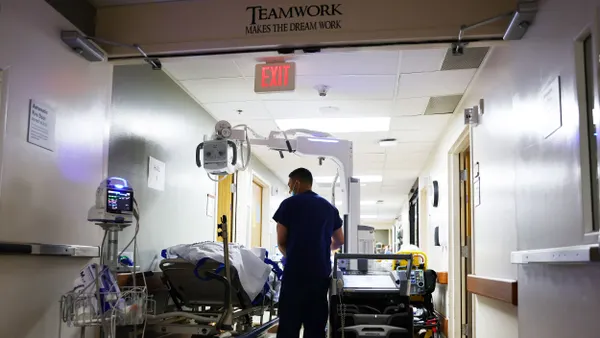Dive Brief:
- Norton Hospital in Louisville, KY reports seeing about 100 more patients a month in its already crowded emergency room since the reform law's health insurance exchanges began in January. That 12% increase in ER patients, many of whom are seeking ER care inappropriately, is forcing the hospital to convert a waiting area into more exam rooms.
- The Kentucky Hospital Association reports a similar surge in ER patients in hospitals across the state. And nationwide, nearly half of ER doctors responding to a recent poll by the American College of Emergency Physicians reported seeing more visits since Jan. 1 and expect the number to continue rising over the next few years.
- Passport Health Plan, a Kentucky Medicaid managed care plan that separates out the newly insured in its claims data, said data suggest its newly insured members are slightly more likely to use ERs than traditional Medicare enrollees. Passport says it tries to connect new members with primary care practitioners and educate them on how to navigate the health care system.
Dive Insight:
A goal of the reform law's Medicaid expansion is to shift newly-insured people into primary care and away from inappropriate and costly ER visits. But some doctors don't accept Medicaid patients; and of those that do, the shortage of primary care physicians makes it especially challenging to cover an influx of newly-insured Americans. One ER doctor in Kentucky likened it to giving ATM cards to people in a town with no ATMs. If those people now on Medicaid were previously uninsured, they may not have regular doctors, and they may be accustomed to using ERs, which may seem more convenient and won't turn them away.
Along with Passport and other payers, some providers report helping patients to find primary care physicians in an effort to lessen inappropriate ER use gradually. In the meantime, everyone worries about financial pressures, hard-to-control Medicaid costs, more crowded ERs and longer wait times.These problems aren't new: Medicaid patients have long been frequent ER users, and yet providers and payers continue to struggle to find ways to get people on track with primary care as a way to help manage chronic illness and prevent new health conditions. The real problem is a fragmented U.S. health care delivery system and frequent lack of meaningful care coordination, and reform didn't change this shaky infrastructure.












